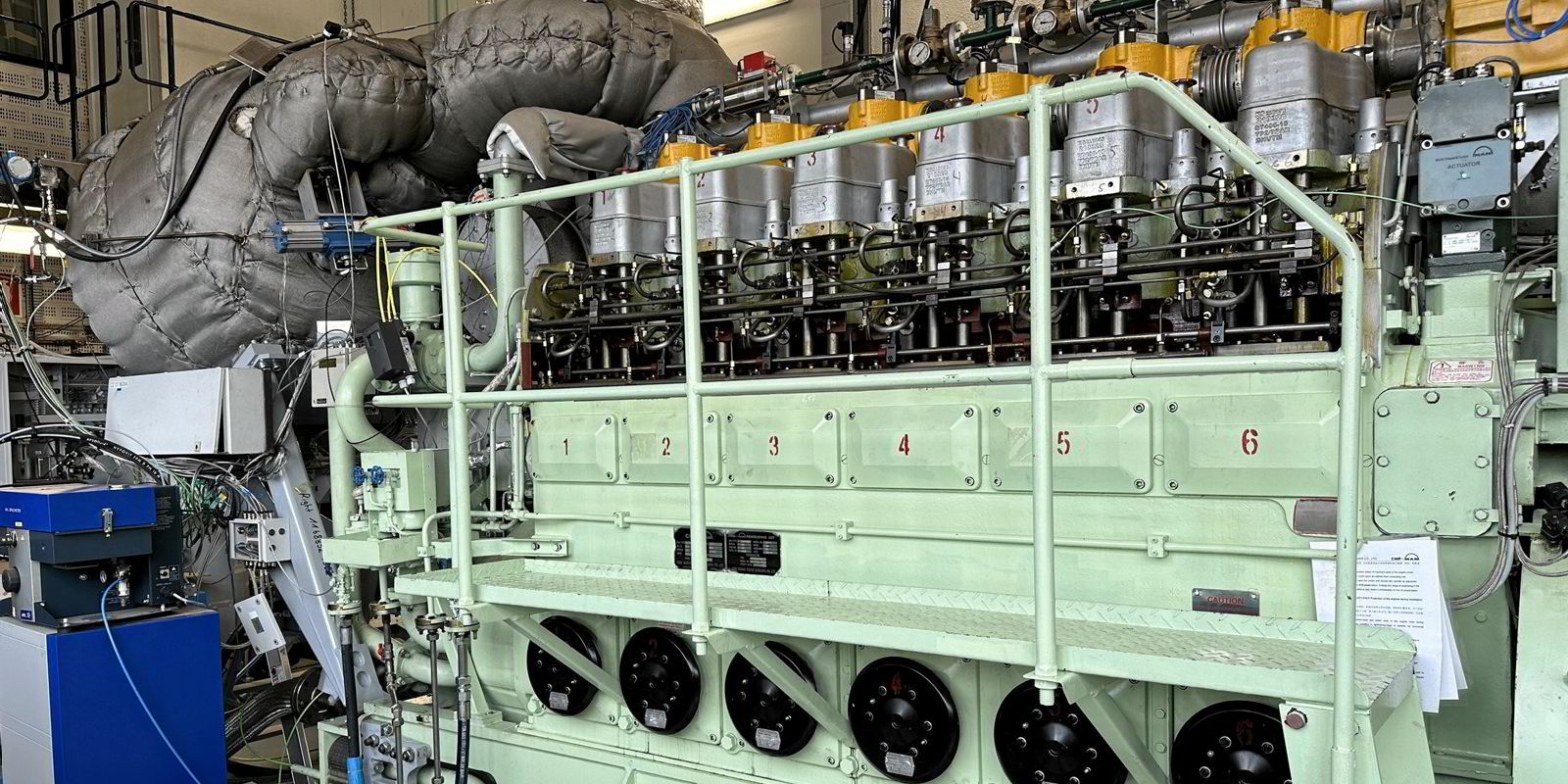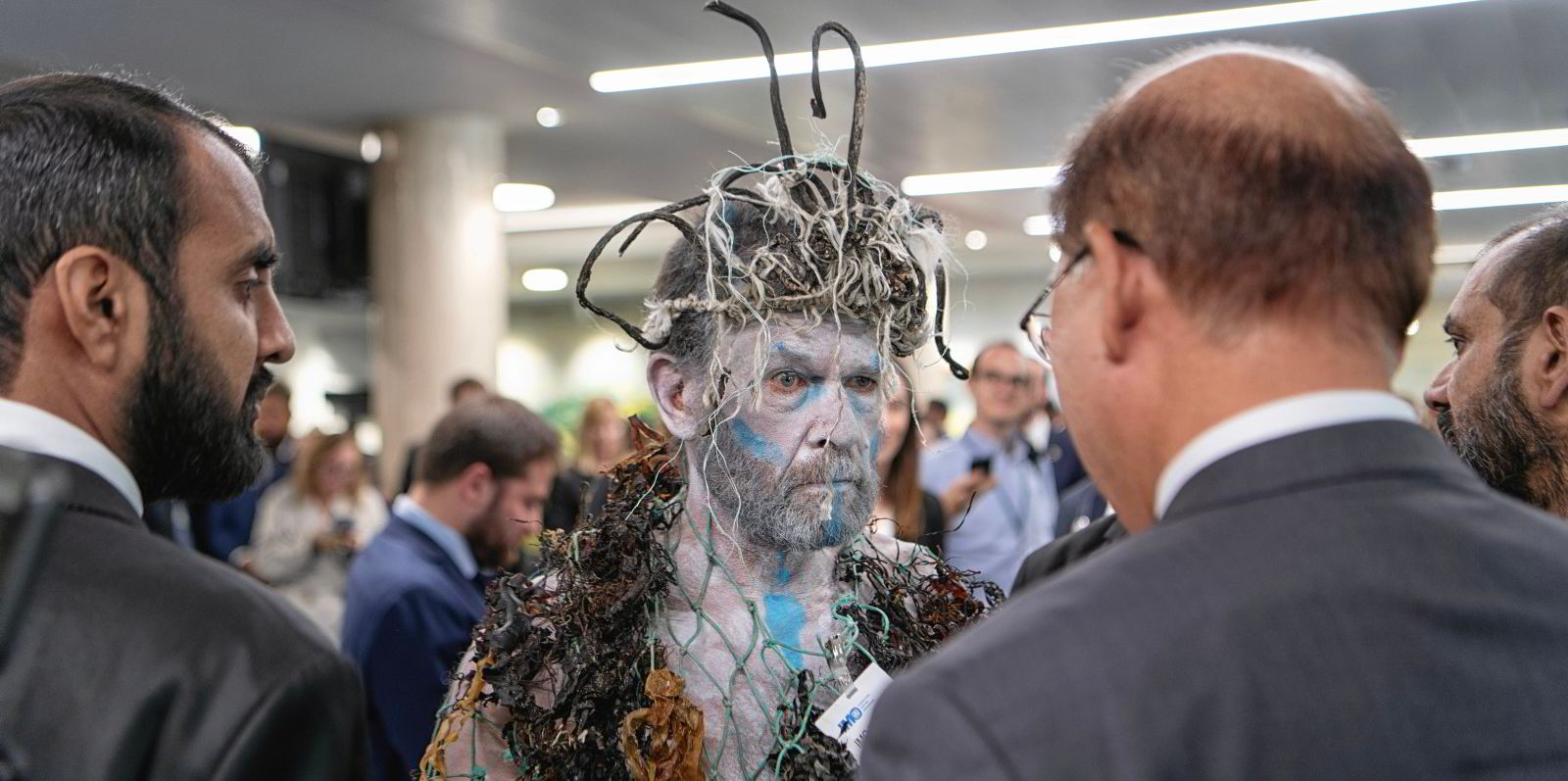Engine makers continue to ramp up investment into methane slip reduction solutions for marine engines fuelled with natural gas as regulators finalise emissions targets, including methane slip into shipping’s emissions calculations.
MAN Energy Solutions announced on Monday it is launching the IMOKAT II project to develop an after-treatment technology to reduce methane slip from its four-stroke engines.
Methane slip is the bane of the LNG-fuelled shipping world, particularly now that it is included in lifecycle assessments of fuels calculations for the Fuel EU Maritime regulations and the draft work at the International Maritime Organization.
LNG has gained acceptance as a transition fuel, with proponents pointing to biomethane and e-LNG as an end game. The problem is that while these cleaner methane molecules have a different lifecycle story, all of them are susceptible to methane slip when burned in a marine engine.
As its name suggests, methane slip is unburned fuel that will slip through the engine and be released into the atmosphere. The problem is that on a volume-for-volume comparison with CO2, it is a far more potent greenhouse gas.
One of the worst engines for methane slip is the four-stroke Otto Cycle, a medium-speed engine with a large correction factor of 3.1 in calculations under the European Union’s Fuel EU Maritime rules, which is much smaller than dual-fuel diesel engines’ correction factor of 0.2.
MAN’s new IMOKAT II project involves the development of an oxidation catalyst for four-stroke engines that will be undergoing testing at the company’s test facilities in Frederikshavn, Denmark, with funds from the German Federal Ministry for Economics and Climate Action.
In a press statement, MAN said the project has been based on finding a more affordable catalyst than previous ones that used precious metals. The aim is to have onboard testing at the beginning of 2024 and then a solution that can be retrofitted on vessels with MAN medium-speed, dual-fuel engines or applied to newbuildings.
Wartsila recently announced an updated version of its 31-bore, four-stroke engines, having tested it on board a Wasaline vessel in the Baltic Sea as part of the EU-funded Green Ray project.
Daphne Technologies has developed its own after-treatment solution to tackle methane slip, as has WinGD with an on-engine solution for its own two-stroke, LNG-powered dual-fuel engines.
The company launched trials earlier this year of its potential answer to reducing methane slip, installing its SlipPure system, based on non-thermal plasma and a catalyst on one of the Wartsila 34DF four-stroke auxiliary engines on Angelicoussis Group’s 173,548-cbm LNG carrier Maran Gas Chios (built 2019).
Another attempt to tackle the issue is the Methane Abatement in Maritime Innovation Initiative, launched last year by the Lloyd’s Register-backed Safetytech Accelerator.
It is a coalition of shipping companies with investments in LNG-fuelled vessels, such as Maran Gas Maritime, Carnival Corp, Knutsen Group, Seaspan Corp, Shell and Mitsui OSK Lines. Its objective is to identify, accelerate and advocate technology solutions to measure accurately and manage methane emissions from shipping.






